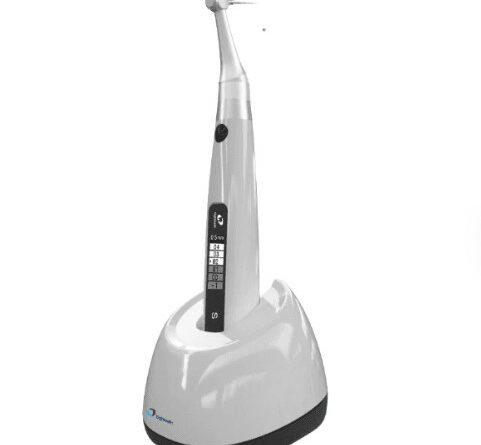The Importance of High-Quality Endodontic Tools in Root Canal Procedures
Endodontic procedures require precision, efficiency, and reliability. The success of root canal treatments heavily depends on the quality of endodontic tools used by dental professionals. From diagnosing pulp infections to shaping and obturating root canals, having the right instruments ensures smooth, predictable, and long-lasting outcomes.
Advancements in endodontic technology have significantly improved procedural success rates by offering tools with greater durability, flexibility, and control. Our collection of endodontic instruments is designed to provide superior performance, ensuring that every stage of the procedure is carried out with maximum accuracy.
Why High-Quality Endodontic Tools Matter
Root canal therapy (RCT) is one of the most common dental procedures performed worldwide. It involves the removal of infected pulp tissue, cleaning and shaping the root canals, and sealing them to prevent reinfection. However, the complexity of root canal anatomy—often with curved and narrow canals—makes the procedure challenging.
Using high-quality endodontic tools can:
✅ Improve Precision – Accurate shaping and cleaning reduce the risk of residual infection.
✅ Enhance Efficiency – Advanced tools save time and minimize procedural fatigue.
✅ Reduce Patient Discomfort – Smooth, effective instruments make treatment less invasive.
✅ Prevent Procedural Errors – Flexible and durable tools lower the risk of perforations and instrument breakage.
By investing in the right endodontic instruments, dentists can achieve more reliable and successful treatment outcomes.
Types of Endodontic Tools for Efficient Treatments
Endodontic tools are designed to perform specific functions at different stages of root canal treatment. Below are some of the essential instruments that make a significant difference in endodontic procedures.
1. Hand Files
Hand files are fundamental in endodontics, used for manually shaping and cleaning root canals. They come in various types, including:
- K-Files – Offer excellent cutting efficiency with a twisted design for enhanced debris removal.
- H-Files – Designed for aggressive cutting action, ensuring effective dentin removal.
- Flex Files – Made from flexible materials to navigate curved canals safely.
Hand files provide excellent tactile feedback, allowing dentists to gauge canal conditions while working.
2. Rotary and Reciprocating Systems
Rotary and reciprocating instruments have revolutionized endodontic treatments by enhancing efficiency and reducing manual effort.
- Rotary Files – These are nickel-titanium (NiTi) instruments designed for high-speed, motor-driven use. They enable faster and more consistent canal preparation with minimal risk of file separation.
- Reciprocating Files – These move in an alternating motion, reducing torsional stress and improving resistance to breakage.
Both systems offer greater flexibility, ensuring a safer and more efficient approach to root canal treatment.
3. Apex Locators
Determining the correct working length is a crucial step in root canal therapy. Apex locators help measure the precise length of the root canal, preventing over-instrumentation or under-filling.
- Key Benefits:
- Reduces reliance on X-rays, minimizing radiation exposure.
- Enhances accuracy, leading to better treatment success rates.
- Improves efficiency, allowing for faster and more predictable procedures.
4. Irrigation and Cleaning Solutions
Effective irrigation is vital to remove debris, dissolve pulp tissue, and disinfect the root canal system. Common irrigants include:
- Sodium Hypochlorite (NaOCl) – A powerful antimicrobial solution that dissolves organic tissue.
- EDTA (Ethylenediaminetetraacetic Acid) – Used to remove the smear layer and enhance file penetration.
- Chlorhexidine (CHX) – Offers broad-spectrum antibacterial properties for additional disinfection.
5. Obturation Devices
Obturation is the final step in root canal therapy, ensuring a complete seal to prevent bacterial reinfection. Our advanced obturation devices include:
- Gutta-Percha Points – The most widely used root filling material, available in different sizes and tapers.
- Warm Vertical Compaction Devices – Improve the adaptability of gutta-percha to root canal walls.
- Syringe-Based Sealers – Provide an efficient and uniform seal along the entire root canal system.
A well-obturated canal enhances long-term treatment success and prevents complications such as reinfection and root fractures.
Benefits of Using High-Performance Endodontic Tools
Upgrading to high-quality endodontic instruments provides numerous advantages for both dental professionals and patients.
1. Enhanced Durability and Flexibility
Premium endodontic tools are made from materials like nickel-titanium (NiTi), which offer superior flexibility and resistance to breakage. This is particularly beneficial for treating complex root canal systems with sharp curvatures.
2. Ergonomic and Comfortable Handling
Our endodontic instruments are designed with ergonomics in mind, reducing hand fatigue during long procedures. Lightweight and well-balanced tools improve maneuverability and precision.
3. Increased Treatment Success Rates
Using reliable and precise endodontic tools leads to better procedural outcomes, reducing the risk of treatment failure. Well-cleaned and properly sealed canals ensure a longer lifespan for treated teeth.
4. Improved Patient Experience
Efficient instruments minimize chair time and discomfort for patients, leading to a more positive dental experience.
5. Comprehensive Range for Every Need
We provide a diverse selection of endodontic instruments to meet the needs of every dentist, from traditional hand files to state-of-the-art rotary systems and digital apex locators.
Conclusion
Endodontic procedures require accuracy, efficiency, and high-quality tools to ensure successful outcomes. Our collection of endodontic instruments is designed to support every stage of root canal therapy, from diagnosis to final obturation. By investing in premium endodontic tools, dental professionals can enhance precision, reduce procedural risks, and improve patient care.
Explore our extensive range of high-performance endodontic instruments today and elevate your root canal treatments with confidence.
FAQs
1. What are endodontic tools used for?
Endodontic tools are used in root canal procedures to clean, shape, disinfect, and seal root canals, ensuring long-term tooth preservation.
2. Why is flexibility important in endodontic instruments?
Flexibility helps navigate complex root structures, reducing the risk of instrument breakage and procedural errors.
3. How do apex locators improve root canal treatments?
Apex locators provide accurate measurements of root canal depth, ensuring effective cleaning and obturation while minimizing over-instrumentation.
4. What is the difference between hand files and rotary systems?
Hand files offer precise manual control, while rotary systems provide faster and more consistent canal shaping using motor-driven NiTi files.
5. What factors should I consider when choosing endodontic tools?
Key factors include material durability, flexibility, precision, ergonomic design, and compatibility with different endodontic techniques.




